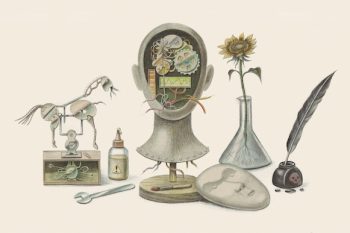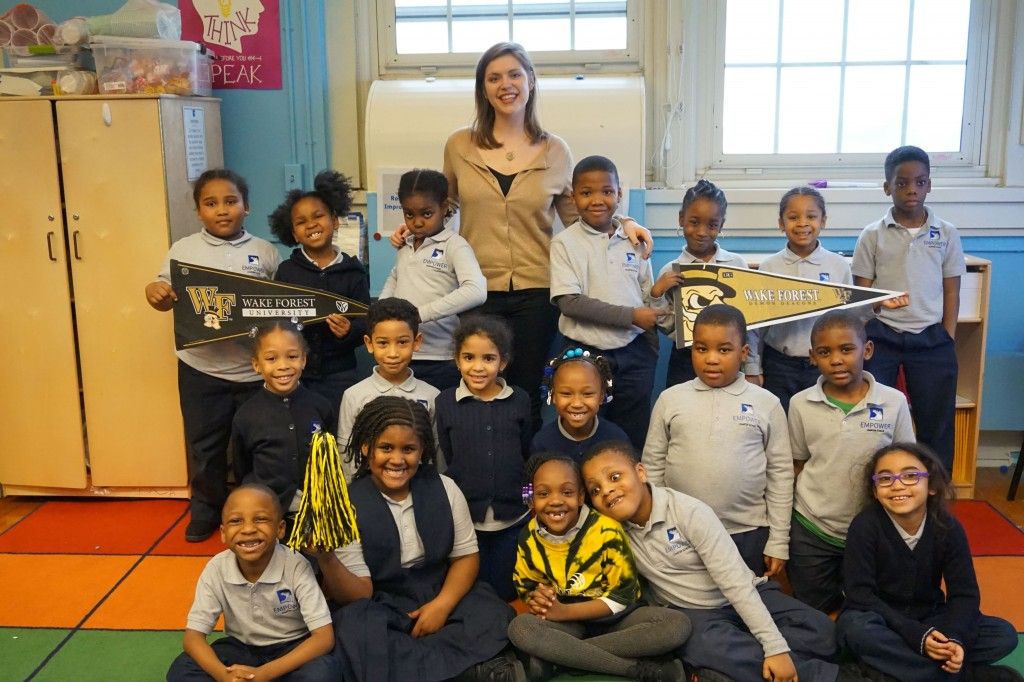
Brittany Inman Jimenez ('11) presides over her 'Wake Forest' class in Brooklyn.
“My wife, Brittany Inman Jimenez (’11), is a teacher at Empower Charter School in Crown Heights, a low-income neighborhood of Brooklyn,” Lucas Jimenez-Stuard (’10) wrote to Wake Forest Magazine. “She is extremely passionate about helping underserved students to succeed. I recently visited her school and was very happy to see the classroom decorated in Wake Forest apparel. Everywhere I turned I saw my beloved Demon Deacon. The class is named Wake Forest; each morning she greets her students with ‘Good morning, Wake Forest.’ Furthermore, the prize for good behavior is wearing … the WF tie-dye T-shirt. I thought it was just awesome to see so much Wake Forest pride happening in a New York City classroom.” We did, too, so we invited Brittany to answer a few questions and share pictures of her classroom.
Tell us about your “Wake Forest” classroom. How is the WF spirit incorporated into your teaching?
In my school, as in many other schools that I have seen, we try to encourage our students to set their sights on college as early as possible. One way that we do this at Empower is by naming our classrooms after colleges. My co-teacher is actually the one who decided that our classroom would be named Wake Forest. She said that she knew that I was very proud of where I went to college and that it was particularly special to me because it is where I met my husband.
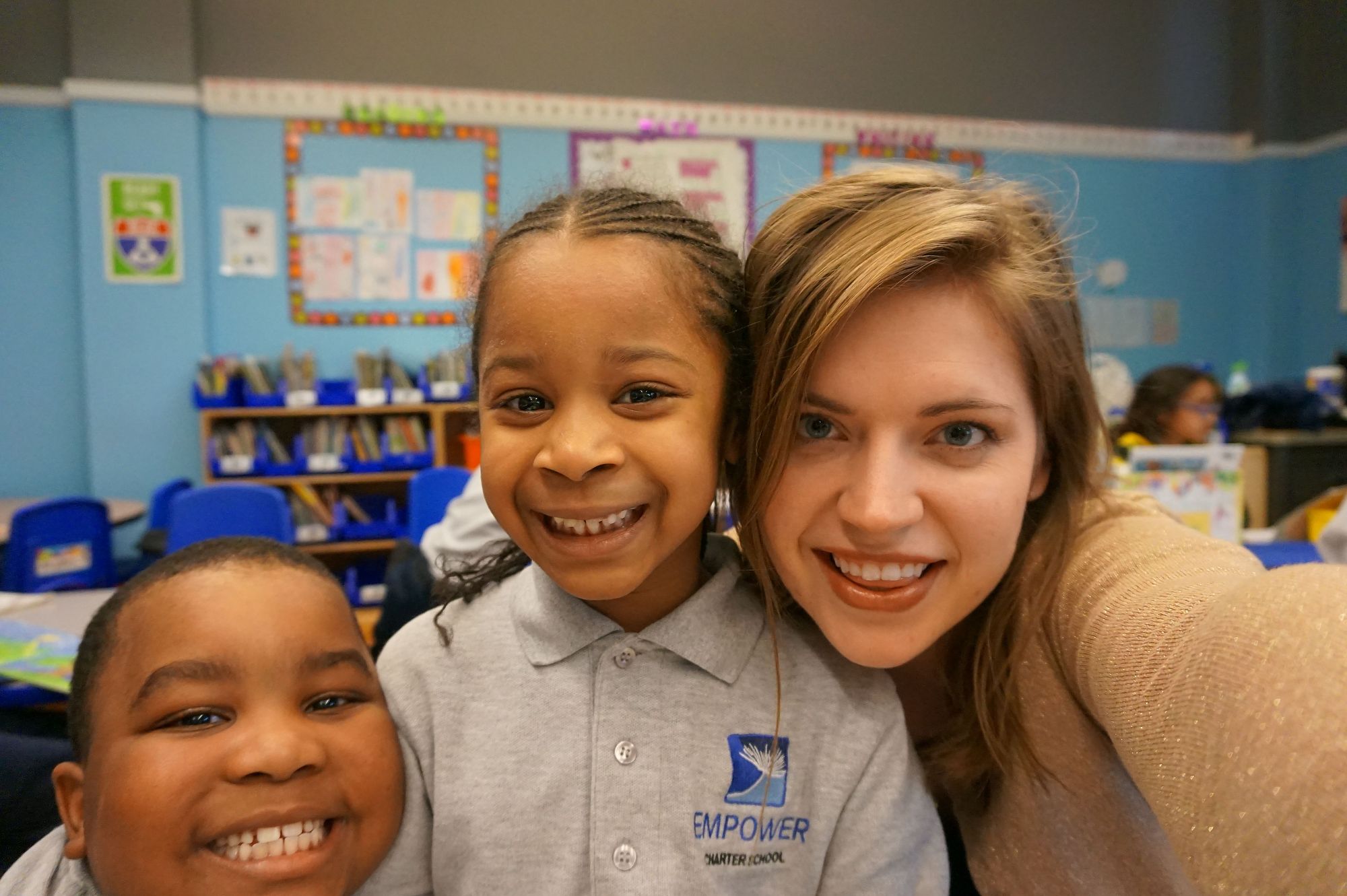
'Children from any background can learn and thrive when they are provided a quality education, and the generational cycle of poverty can be broken with one child graduating from college.'
We spend a lot of time speaking with our first-graders about why a college education is important to their futures as well as just trying to give them an idea what college is all about. It is very important that they set their sights on higher education right away since so much is riding on their early education.
In our classroom, we have WF pennants on the walls and WF stamps that we put on student papers when they do well. At Empower, we have Community Circle every week. All of the K-2 classes get together for an assembly geared toward showing school and class pride and celebrating individual and class successes. All of the classes come up with a school cheer that we perform every week at Community Circle. Our cheer is titled “Black and Gold” and is to the tune of “Black and Yellow.” I also brought in one of my old Screamin’ Demon tie-dye T-shirts. When a student is showing “school pride” (notable effort, achievement or sense of community), he/she gets to wear the highly coveted T-shirt for the day.
What was your major? When/how did you decide to become a teacher?
I double-majored in political science and psychology and had no intentions of becoming a teacher. I’m from Thomasville, North Carolina, so, as you can see, I didn’t go away to college. I wanted to experience a new and exciting city and what city is more exciting than New York City? I was accepted into an AmeriCorps program called City Year. I was put on a 10-person team of 17 to 24-year-olds from diverse backgrounds and assigned to an elementary school in the South Bronx (the poorest congressional district in the United States). We ran academic, behavioral and attendance-related intervention programs as well as provided a service-based after school program.
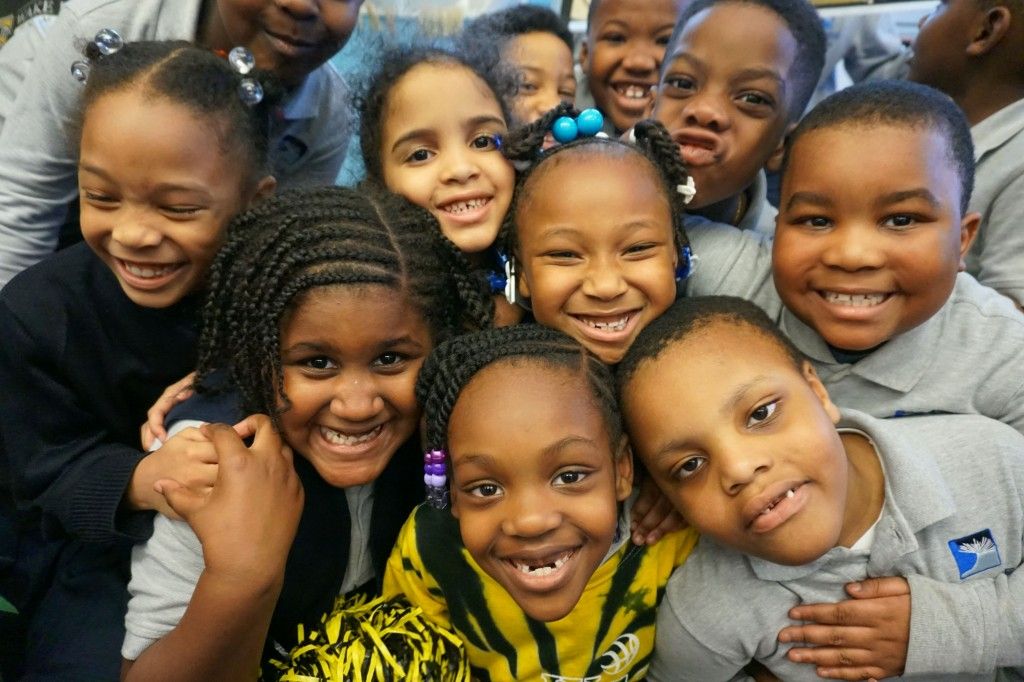
'When a student is showing “school pride” (notable effort, achievement or sense of community), he/she gets to wear the highly coveted tie-dye T-shirt for the day.'
After growing up in a small town in the South, this experience was eye-opening, to say the least. The state of the school and community in which I worked was devastating. Class sizes were far too large (some classes were as bad as 42 students to one teacher). There was no room to walk in the classrooms because so many desks had been squeezed into the rooms. Teachers were overwhelmed; neither teachers nor students felt safe; and administrators were powerless to fix these problems. Learning was not happening and the school was failing. I soon learned that this was not a unique situation in New York City. Schools in underserved neighborhoods all over the city were, and are, failing.
I knew that I wanted to continue to work in education after my year with AmeriCorps, but I wasn’t sure at what capacity. I got a fellowship position at a Success Academy Charter School about five blocks from the school where I served the previous year. My poly-sci background really came in handy since charter schools are a real hot-button issue in New York City these days. This was a school in the very same community but children were learning. The environment felt safe and happy but still very academically rigorous. I learned a lot about what it takes to impact a community through quality education. I was also able to earn a master’s degree in elementary education and special education during my year with Success Academy.
After my fellowship, I worked for a sub agency and was able to see a very diverse array of schools. I was able to visit many charter schools and private schools across Manhattan, the Bronx, Brooklyn and Queens. This was definitely a valuable experience that helped me to better understand urban schooling and to decide what my next step would be.
Last year, I began teaching second grade at Empower (a school in the Explore network) in Crown Heights, Brooklyn. Neighborhoods across NYC’s boroughs all have their own cultural flavor, though most underserved communities have many of the same issues pertaining to education. I have grown to value our community, both in and outside of our school building, over the past year and a half. I love getting to see my students from last year while I get to know my fantastic group of 30 first-graders that I have this year. I never thought I would teach but here I am. It’s definitely the most challenging pursuit I have ever experienced but I get to work with great teachers and children and families, and I learn so much along the way.
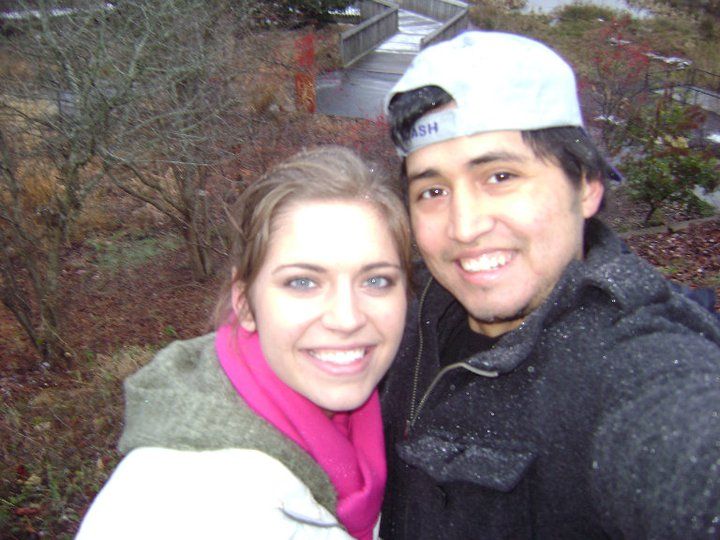
Brittany and her husband, Lucas Jimenez-Stuard ('10), met while freshmen in Piccolo residence hall.
Why is teaching important to you?
I’m not quite sure how to answer this without sounding completely trite and cliché but I’ll give it a shot. There is a huge gap between academic achievement in children in underserved communities and children elsewhere. It’s not fair that a child is automatically at a disadvantage because of where he or she lives or because of their family’s socioeconomic status. The inequality of opportunity that is present throughout the country is particularly stark in NYC because the cultural and socioeconomic lines are so clearly drawn and because they change so dramatically from neighborhood to neighborhood.
Children from any background can learn and thrive when they are provided a quality education, and the generational cycle of poverty can be broken with one child graduating from college. It is an exciting time to be in education because we are finally starting to realize what does not work so now we can start working to make necessary changes to ensure that more and more students are given the opportunity to be academically successful. Teaching is important to me because I get to see my effort come to fruition. I can see right away when I’m doing something well (or not). I get to make a direct impact on the students and families that I serve and hopefully get to contribute over time to leaving a community better than I found it.
How did you and Lucas come to settle in New York?
I met my husband at Wake Forest. He was a transfer student so he got put in my freshman dorm (Piccolo!) where we initially met. We started dating two years later and have been together ever since. He is from Manhattan so it was just a matter of coming home after he graduated.

